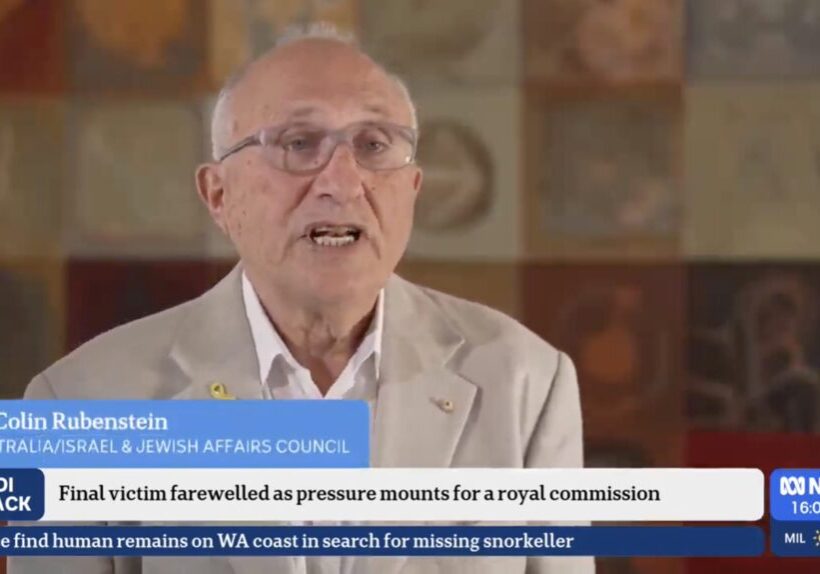Australia/Israel Review
Scribblings: Jim Crow and the “Pact of Umar”
Jun 30, 2014 | Tzvi Fleischer
Tzvi Fleischer
I’ve written before in this column (e.g. see Jan. 2012, March 2012, and Nov. 2012) about the oft-repeated myth that the Jews of the the Middle East enjoyed tolerance and freedom from racial hatred until the late 19th and early 20th century, when Zionism and the import of European antisemitism supposedly ruined this positive situation. I’ve cited various pieces of contemporaneous evidence that show that, while things varied from period to period and place to place, the situation of Middle East Jews was often somewhat akin to African-Americans during the Jim Crow-era American South, legally unequal and subject to laws designed to highlight their inferior status and frequently victims of outright ill-treatment and persecution by the Muslim majority. Pogrom-like attacks on Jewish neighbourhoods were also not unusual – often sparked by an accusation by a Muslim that a single Jew had behaved in an insufficiently respectful fashion.
While it is clear that, despite myths to the contrary, some antisemitic traditions have long been indigenous to Middle East culture, another part of the reason for this reality was something called the “Pact of Umar”. This was a deal supposedly made between the second Muslim Caliph Umar bin al-Khattab (who ruled from 634 to 644 CE), and a community of Christians he conquered in Syria. It was subsequently held up in the various Islamic schools of jurisprudence as the model for the relations between Muslim rulers and their non-Muslim subjects who are “People of the Book” – that is Christians and Jews. While the Koran specifies that non-Muslims are to pay a special poll tax, the Jizya, the Pact added many more requirements and restrictions.
While several similar versions of the text have come down to the present day, among the provisions in all or most of them are:
- The erection or repair of churches and synagogues which did not exist during the pre-Muslim period was prohibited. So was the repair of churches in Muslim neighbourhoods no matter when they were built. Churches also could not display crosses externally.
- Christians were not to raise their voices in their churches or be seen in public with crosses. They were not to hold public processions for religious holidays or use candles or sing during funeral processions.
- They were not to proselytise, or to prevent their relatives from converting to Islam.
Non-Muslims were not to employ a Muslim in their service. - Non-Muslims were to honour Muslims and stand in their presence. They must not strike Muslims, deceive them or incite against them.
- Non-Muslims were to accommodate any Muslim traveller for three days with food and board.
- They were not to resemble Muslims in their clothing or hairstyle. Some versions set out specific clothing and colours that Christians and Jews must always wear in public.
- They were to always shave the front of their head.
- They were not to be called by Muslim names.
- They were forbidden to carry arms.
- They were not to ride on horses or mules but only asses, and then on pack saddles without any ornaments. They were to ride sidesaddle.
- Their houses and tombs were not to be higher than those of Muslims.
In other words, there was a whole series of provisions designed to make Christians and Jews always identifiably different and identifiably inferior and subservient to Muslims and also to prevent their religious practices being visible to Muslims. Moreover, there appears to have been an unspoken expectation that non-Muslim communities would eventually diminish and disappear – unable to build new places of worship or, in many cases, repair existing ones, as well as to proselytise in any way.
Further, the various versions of the Pact all have the non-Muslims pledging to guarantee to keep its provisions for all their descendants, spouses, and neighbours. If they do not, they, in the words of one version, “become liable to the same treatment you inflict upon the people who resist and cause sedition” – that is, they become fair game for killing or enslavement by Muslims.
In short, it does look like a formulation for something like Jim Crow – legal inequality and enforced, visible subservience – with a religious dimension. Moreover, the guarantee clause essentially invites violent mass retribution any time any one member of the affected communities is seen as having violated the Pact.
Happily, in reality, the degree of enforcement of the provisions of the Pact varied considerably from time to time and place to place, otherwise, there might be no Christian or Jewish communities left in the region. But it was nonetheless the model that Islamic religious law held up as the ideal – and it hardly equates to anything the modern world of human rights would find acceptable.
Nor is it dead as a model even today. Islamists across the Middle East are seeking to re-impose it, which partly accounts for the difficult plight of regional Christians. In Raqqa, Syria, the home base of ISIS, currently wreaking havoc in Iraq, authorities are reportedly trying to impose all the provisions of the pact on the Christian community there.
Elsewhere, supposed violations of the pact, such as repairing a church or allegedly harbouring converts from Islam, have often been the excuse for Islamist extremist attacks on Christian communities in Egypt, Pakistan, in Gaza and elsewhere.
So while, historically, the situation for Jews in the Middle East has at times been better than in Europe, there are many reasons it should not be held up as any sort of ideal for today.
Tags: Antisemitism
RELATED ARTICLES

Parameters of a Royal Commission will be crucial: Joel Burnie on Sky News





